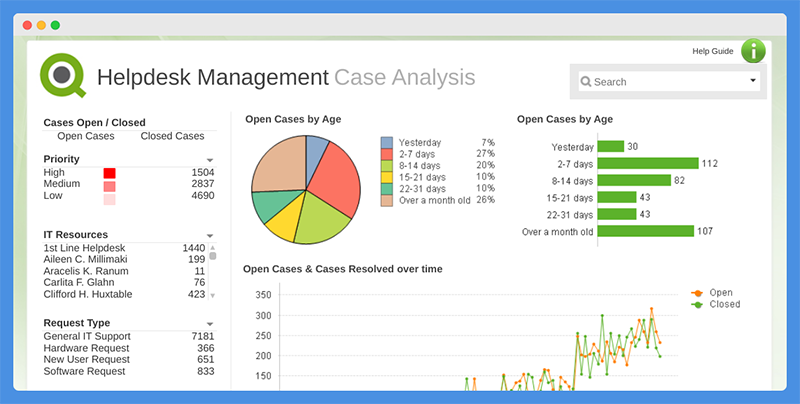Personal Career & Learning Guide for Data Analyst, Data Engineer and Data Scientist
QlikView is a powerful data analysis tool used by many businesses and organizations around the world. It helps users quickly and easily analyze complex data sets, uncover new insights, and make informed decisions. One of the key features of QlikView is the “Fill Function,” which allows users to automatically fill in missing values in their data. This function is an essential tool for data analysts who want to ensure the accuracy and completeness of their data.
The Fill Function in QlikView works by analyzing the existing data in a table and then filling in missing values based on a set of rules or conditions. For example, if a data set contains missing values for the sales of a particular product, the Fill Function can automatically fill in these values based on the sales of similar products or the average sales for that product over a given time period.
The Fill Function is highly customizable and can be tailored to meet the specific needs of each user. For example, users can specify which values should be filled in, the order in which values are filled in, and the conditions that must be met before the Fill Function is applied. This allows users to ensure that the data they are analyzing is accurate and complete, while also giving them complete control over the process.
In addition to filling in missing values, the Fill Function can also be used to perform other data transformations, such as replacing values with new values, splitting data into multiple columns, and more. This versatility makes the Fill Function an essential tool for data analysts who want to quickly and easily manipulate their data to uncover new insights and make informed decisions.
One of the benefits of using the Fill Function in QlikView is that it helps users save time and effort. Instead of manually entering missing values, users can simply let the Fill Function do the work for them. This frees up time that can be better spent on more important tasks, such as analyzing the data, making informed decisions, and communicating results to stakeholders.
Another benefit of using the Fill Function is that it helps ensure the accuracy and completeness of data. By automatically filling in missing values, the Fill Function helps eliminate errors that could be introduced if missing values were manually entered. This is especially important for data analysts who want to ensure that the insights and decisions they make are based on accurate and complete data.
In conclusion, the Fill Function in QlikView is an essential tool for data analysts who want to quickly and easily analyze complex data sets, uncover new insights, and make informed decisions. With its customizable options, time-saving benefits, and ability to ensure data accuracy and completeness, the Fill Function is an indispensable tool for anyone working with data. Whether you are a seasoned data analyst or just starting out, the Fill Function is a feature you won’t want to be without.
QlikView for Data Analyst – QlikView – Fill Function
 Loading...
Loading...
Latest end-to-end Learn by Coding Projects (Jupyter Notebooks) in Python and R:
All Notebooks in One Bundle: Data Science Recipes and Examples in Python & R.
End-to-End Python Machine Learning Recipes & Examples.
End-to-End R Machine Learning Recipes & Examples.
Applied Statistics with R for Beginners and Business Professionals
Data Science and Machine Learning Projects in Python: Tabular Data Analytics
Data Science and Machine Learning Projects in R: Tabular Data Analytics
Python Machine Learning & Data Science Recipes: Learn by Coding
R Machine Learning & Data Science Recipes: Learn by Coding
Comparing Different Machine Learning Algorithms in Python for Classification (FREE)
There are 2000+ End-to-End Python & R Notebooks are available to build Professional Portfolio as a Data Scientist and/or Machine Learning Specialist. All Notebooks are only $29.95. We would like to request you to have a look at the website for FREE the end-to-end notebooks, and then decide whether you would like to purchase or not.
